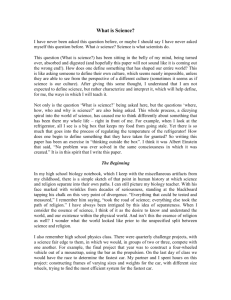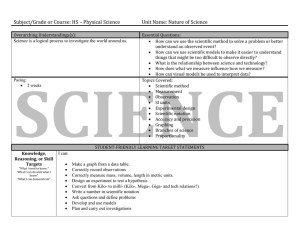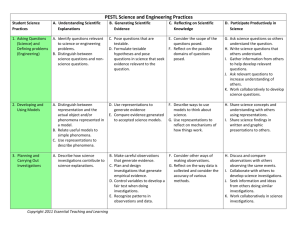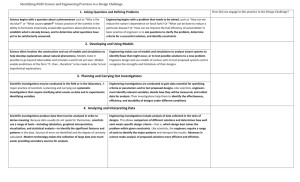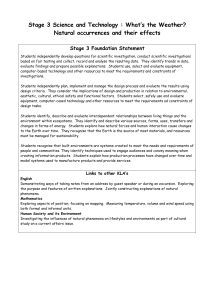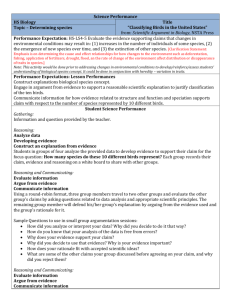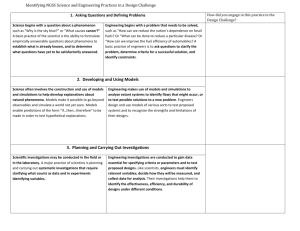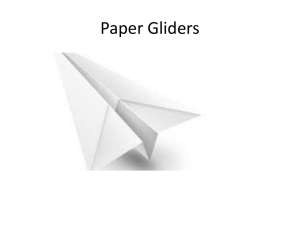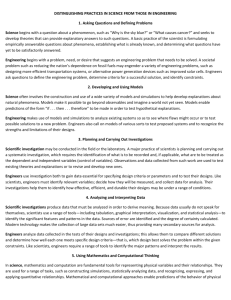Grade-Four-Standards
advertisement
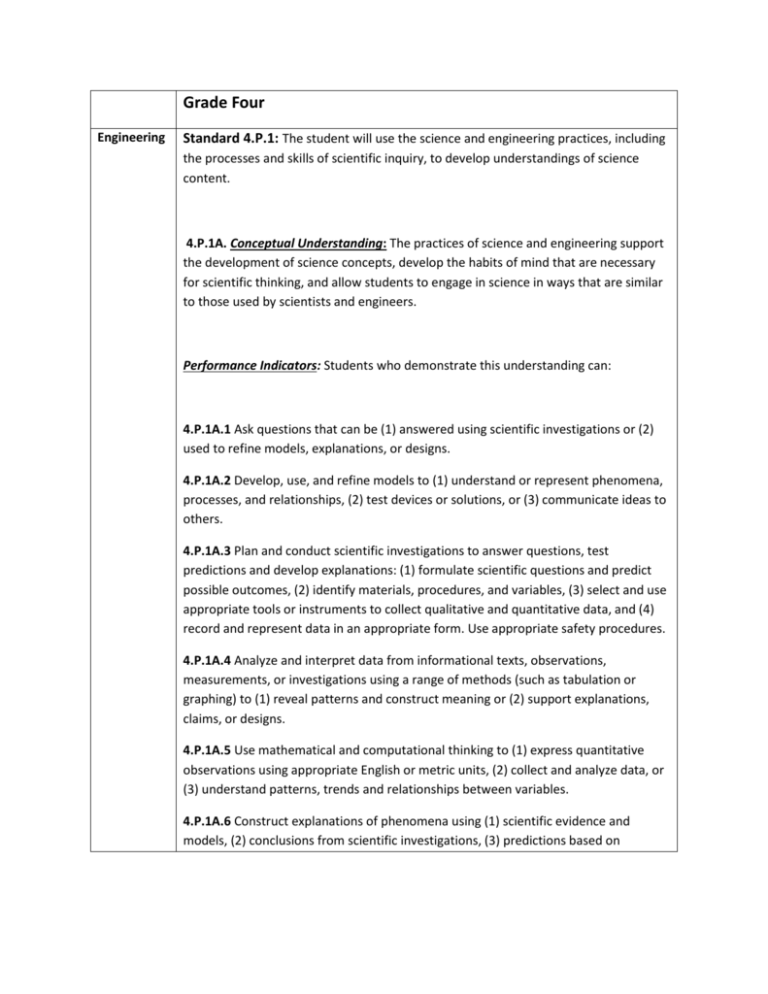
Grade Four Engineering Standard 4.P.1: The student will use the science and engineering practices, including the processes and skills of scientific inquiry, to develop understandings of science content. 4.P.1A. Conceptual Understanding: The practices of science and engineering support the development of science concepts, develop the habits of mind that are necessary for scientific thinking, and allow students to engage in science in ways that are similar to those used by scientists and engineers. Performance Indicators: Students who demonstrate this understanding can: 4.P.1A.1 Ask questions that can be (1) answered using scientific investigations or (2) used to refine models, explanations, or designs. 4.P.1A.2 Develop, use, and refine models to (1) understand or represent phenomena, processes, and relationships, (2) test devices or solutions, or (3) communicate ideas to others. 4.P.1A.3 Plan and conduct scientific investigations to answer questions, test predictions and develop explanations: (1) formulate scientific questions and predict possible outcomes, (2) identify materials, procedures, and variables, (3) select and use appropriate tools or instruments to collect qualitative and quantitative data, and (4) record and represent data in an appropriate form. Use appropriate safety procedures. 4.P.1A.4 Analyze and interpret data from informational texts, observations, measurements, or investigations using a range of methods (such as tabulation or graphing) to (1) reveal patterns and construct meaning or (2) support explanations, claims, or designs. 4.P.1A.5 Use mathematical and computational thinking to (1) express quantitative observations using appropriate English or metric units, (2) collect and analyze data, or (3) understand patterns, trends and relationships between variables. 4.P.1A.6 Construct explanations of phenomena using (1) scientific evidence and models, (2) conclusions from scientific investigations, (3) predictions based on observations and measurements, or (4) data communicated in graphs, tables, or diagrams. 4.P.1A.7 Construct scientific arguments to support claims, explanations, or designs using evidence from observations, data, or informational texts. 4.P.1A.8 Obtain and evaluate informational texts, observations, data collected, or discussions to (1) generate and answer questions, (2) understand phenomena, (3) develop models, or (4) support explanations, claims, or designs. Communicate observations and explanations using the conventions and expectations of oral and written language. Life Standard 4.L.5: The student will demonstrate an understanding of how the structural characteristics and traits of plants and animals allow them to survive, grow, and reproduce. 4.L.5A. Conceptual Understanding: Scientists have identified and classified many types of plants and animals. Each plant or animal has a unique pattern of growth and development called a life cycle. Some characteristics (traits) that organisms have are inherited and some result from interactions with the environment. Performance Indicators: Students who demonstrate this understanding can: 4.L.5A.1 Obtain and communicate information about the characteristics of plants and animals to develop models which classify plants as flowering or nonflowering and animals as vertebrate or invertebrate. 4.L.5A.4 Construct scientific arguments to support claims that some characteristics of organisms are inherited from parents and some are influenced by the environment. 4.L.5B. Conceptual Understanding: Plants and animals have physical characteristics that allow them to receive information from the environment. Structural adaptations within groups of plants and animals allow them to better survive and reproduce. Performance Indicators: Students who demonstrate this understanding can: 4.L.5B.1 Develop and use models to compare how humans and other animals use their senses and sensory organs to detect and respond to signals from the environment. 4.L.5B.2 Construct explanations for how structural adaptations (such as the types of roots, stems, or leaves; color of flowers; or seed dispersal) allow plants to survive and reproduce. 4.L.5B.3 Construct explanations for how structural adaptations (such as methods for defense, locomotion, obtaining resources, or camouflage) allow animals to survive in the environment


